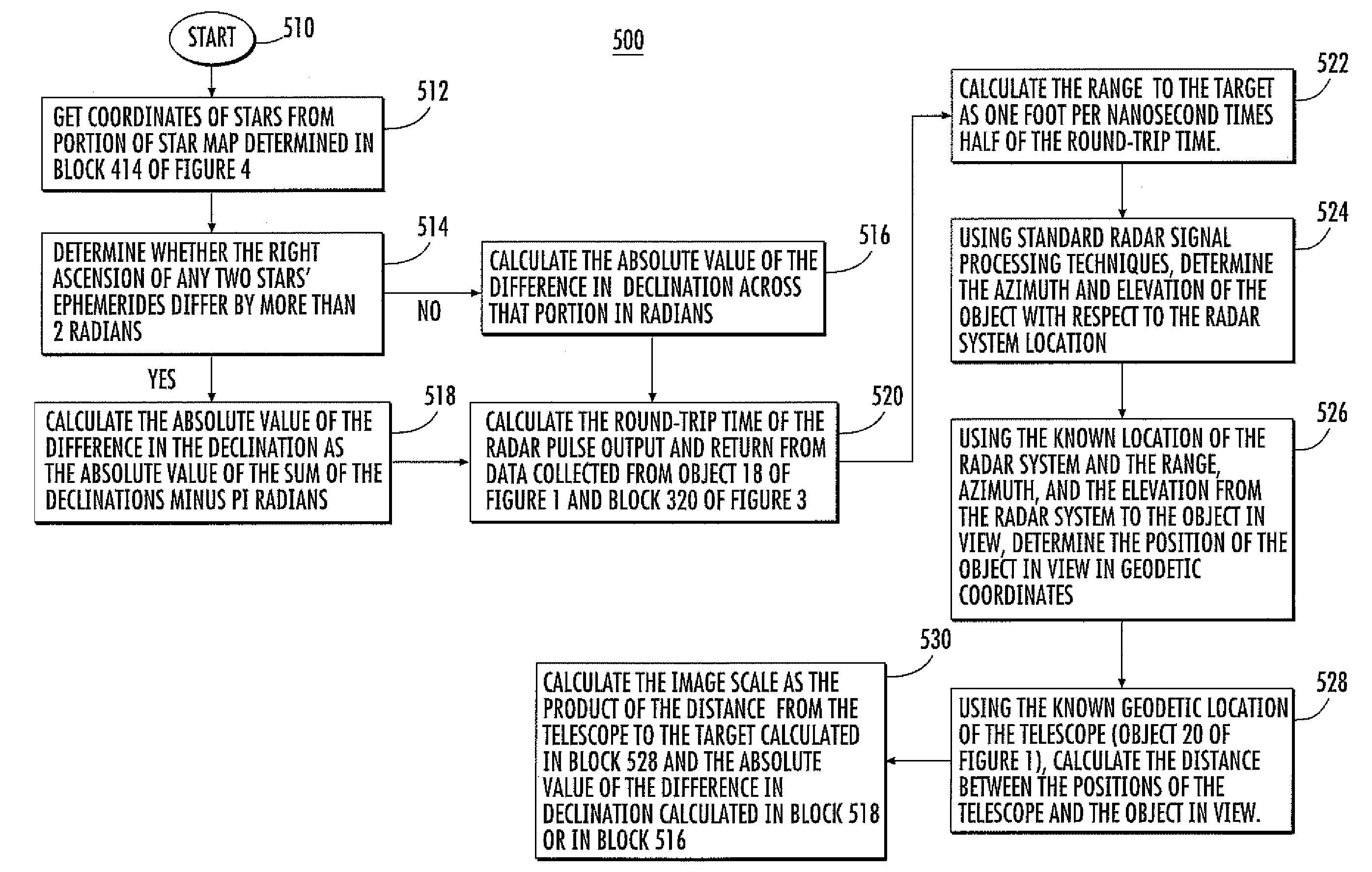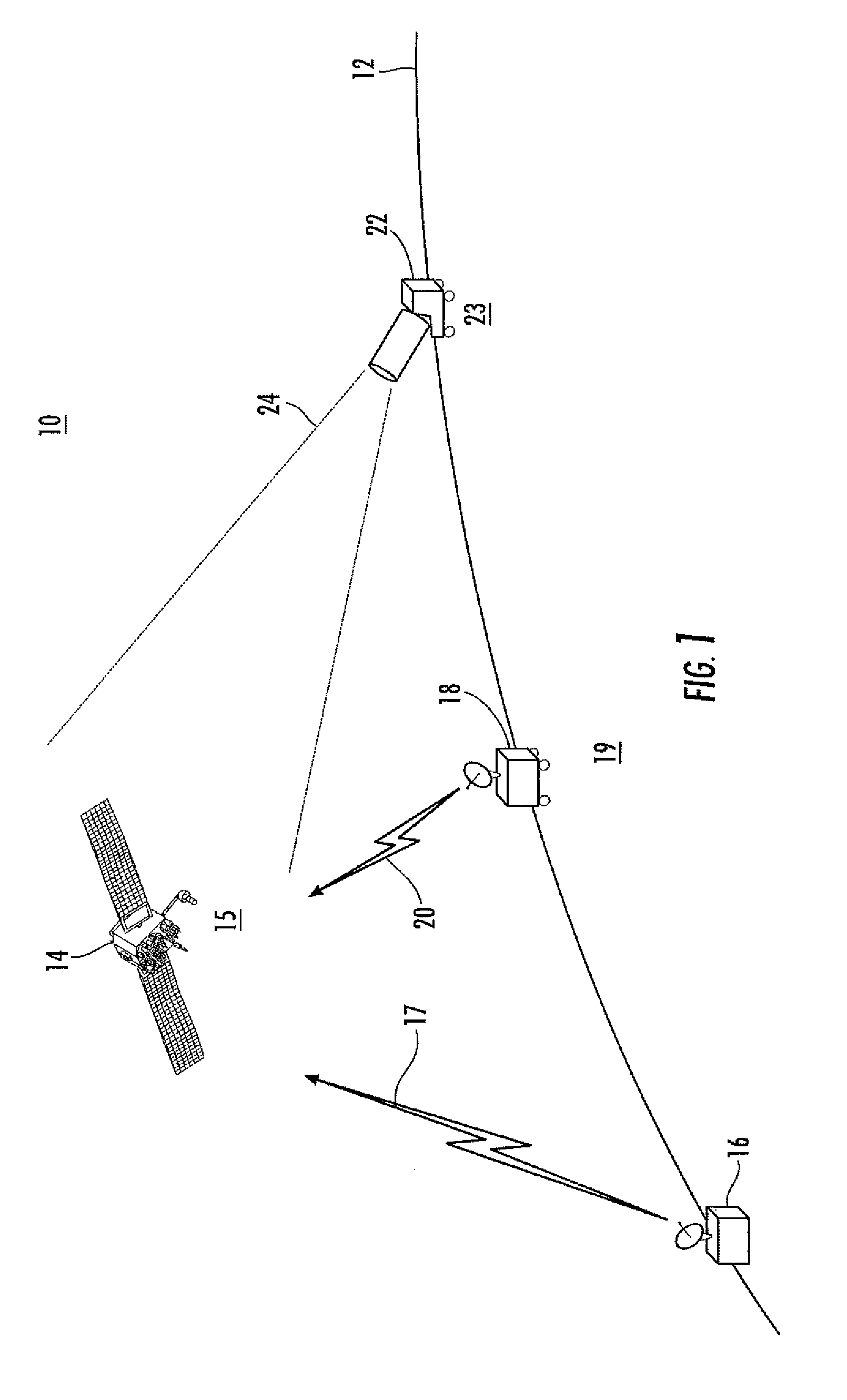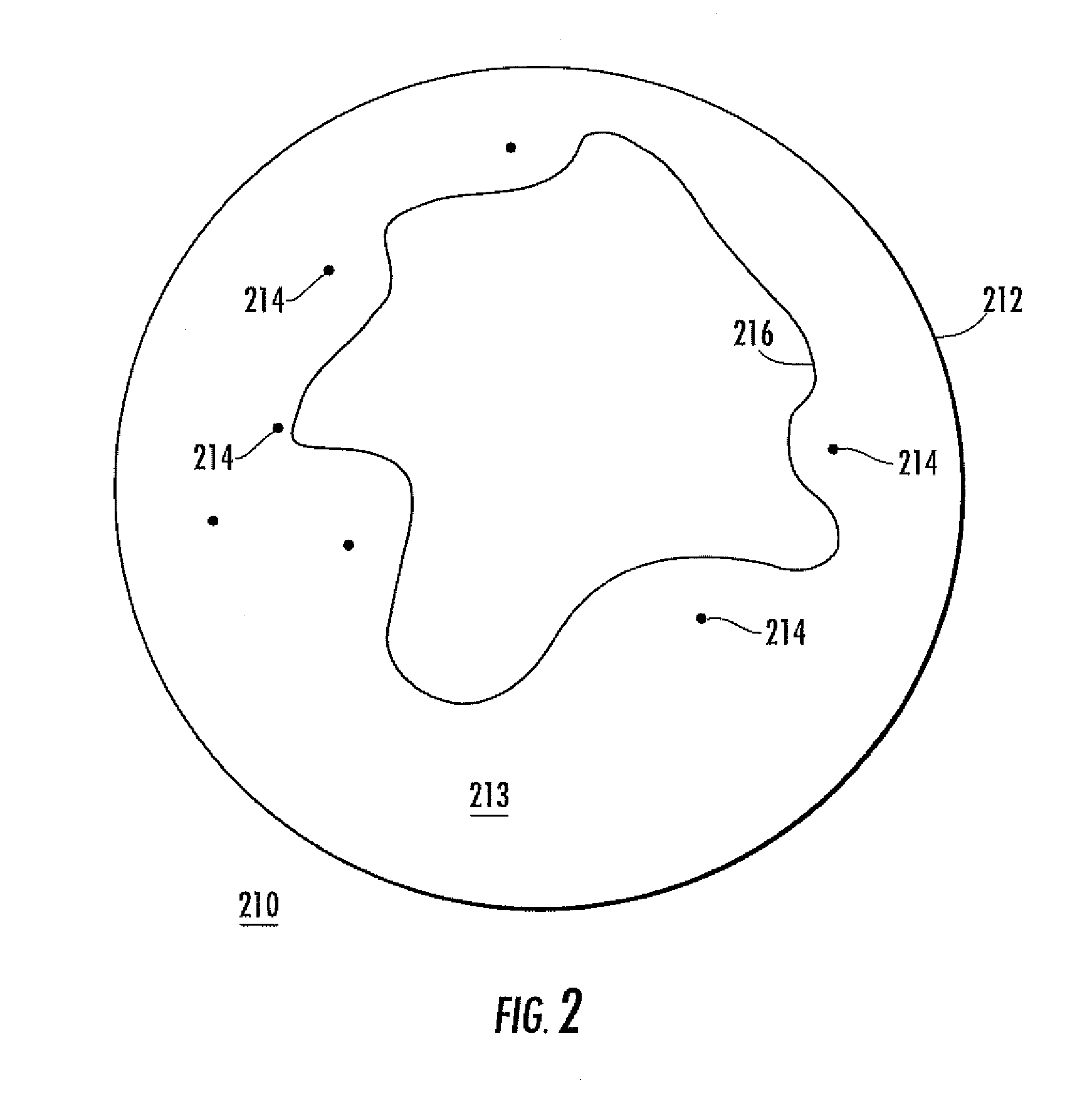Determination of the outline of an elevated object
- Summary
- Abstract
- Description
- Claims
- Application Information
AI Technical Summary
Problems solved by technology
Method used
Image
Examples
Embodiment Construction
[0012]In scenario 100 of FIG. 1, the Earth's horizon is designated as 12, and a near-Earth-orbit object illustrated as 14 lies in a region 15 of Earth's shadow or umbra. That is, the sun is on the other side of the Earth from that illustrated, so object 14 is in eclipse. A volume scanning radar illustrated as 16 uses radar signals illustrated by a lightning bolt symbol 17 to determine the ephemeris of the object 14. Ephemeris means a table of values which gives the position of astronomical objects in the sky at a given time or times. Thus, operation of the radar system 16 establishes the general orbital location of object 14.
[0013]Also in FIG. 1, another radar system (or possibly the same as radar system 16) illustrated as 18 is placed at a location 19, at which location it is capable of viewing the region occupied by object 14. The coordinates of location 19 must be known, as for example by use of a global positioning system (GPS), and the orientation of the radar 18 must also be k...
PUM
 Login to View More
Login to View More Abstract
Description
Claims
Application Information
 Login to View More
Login to View More - R&D
- Intellectual Property
- Life Sciences
- Materials
- Tech Scout
- Unparalleled Data Quality
- Higher Quality Content
- 60% Fewer Hallucinations
Browse by: Latest US Patents, China's latest patents, Technical Efficacy Thesaurus, Application Domain, Technology Topic, Popular Technical Reports.
© 2025 PatSnap. All rights reserved.Legal|Privacy policy|Modern Slavery Act Transparency Statement|Sitemap|About US| Contact US: help@patsnap.com



